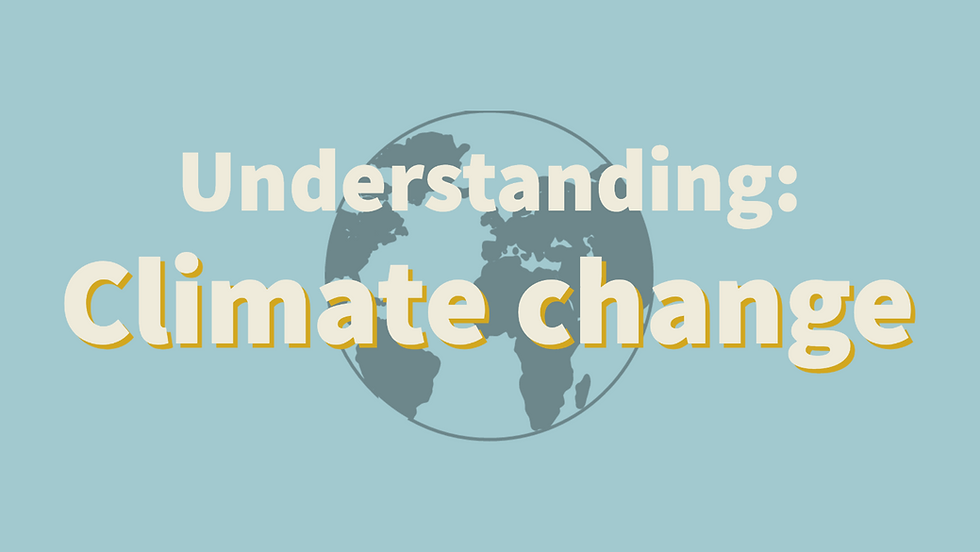Interview with Marine Biologist - Mads St Clair
- Lucinda Turquand-Young
- Oct 10, 2021
- 4 min read
Updated: Dec 10, 2021
Mads St Clair is a marine biologist, Wildlife photographer/film maker and small business owner (Blu Wild sustainable swimwear). She investigates and documents ocean wildlife and records the affect that climate change has on the natural world. In this interview, Mads talks about how the ocean is being impacted by the climate crisis and a little about what can be done about it.

1. Please can you introduce yourself and explain why you became a marine biologist.
I’m Mads (Madeline) St Clair, a marine biologist, filmmaker, small business owner and founder of non-profit organisation Women in Ocean Science. For me it’s always been quite simple: I became a marine biologist because I love the wild and I want to protect it. I’ve always had a drive to learn to investigate and to document our natural world, and seeing the destruction of the marine environment first-hand in recent years, I have also transitioned from scientist to advocate.
2. What do you think are the current biggest threats to the ocean and its wildlife? And why?
Over consumption is the greatest threat to the ocean. We take, we use, we throw away. As a result? Climate change, overfishing, pollution.
3. As a marine biologist/wildlife photographer, how much do you notice how the climate crisis is affecting the ocean and it's wildlife?
Climate change is driving so much of the destruction of our oceans, and as a field scientist, it’s a challenge staying positive sometimes. You get to see nature of the greatest beauty, sure, and then you get to watch it die. Seeing coral bleaching - or the aftermath - is one of the hardest things I’ve ever had to see. It’s like watching your favourite city burn down. The structures are skeletons. The inhabitants are largely gone. It’s empty and lifeless and devoid of hope.
4. How much do you notice the plastic pollution issue when you are working/diving/sailing? Is it as big of a problem as the media portrays?
Plastic is everywhere. It’s in our food, water - every time we move, a few more fibres shed off our clothes into the air we breath. Aesthetically speaking, it’s an absolute visual crisis. When I was researching out on an uninhabited island in Indonesia, some days, especially after a big swell or some bad weather, the plastic debris would be knee-high on the shore line. There’s plastic on every scuba dive, every walk on the beach. Out in the Arctic recently though, I was pretty shocked to see pretty much zero big plastic waste, a testament to how the marine environment looked previously. But this doesn’t mean plastic isn’t there, there are still tiny little micro-plastics particles floating. And the impacts on marine life - or even humans - are still being studied. So yes, plastic is everywhere and it’s a huge issue. But set this aside for a moment and I do have a problem with how the media portrays the issue: the focus on “cleaning up”. I mean sure, that’s important, but really, we should be directing the conversation towards reducing production, reducing the (HUGE) carbon emissions from plastics and using circular economy more efficiently.

5. What are some of the solutions that should be implemented to stop some of the devastations that are happening to the oceans? (Such as the coral reefs dying and different species becoming endangered)
What’s needed now is drastic climate action. We need to start hitting emissions targets or else we might as well just give up and say ciao to coral reefs. It doesn’t matter if you’re making necklaces out of ocean plastic or replanting coral, without a fundamental shift in atmospheric levels of greenhouse gases, the other stuff we do won’t amount to much in the grand scheme of things. (Disclaimer: yes, I believe everyone has a part to play, and if that’s making products out of plastic or replanting coral, then go you, that’s epic! But really, we need fast, top-tier governmental and corporate action to actually create change).
6. What is your opinion on only 7% of the ocean being protected? Do you think this needs to change?
It’s super important to protect more of the worlds’ oceans. Well managed MPAs have proven their effectiveness time and time again. It’s a deeply complex issue though because at the bottom line, we need manpower to enforce protected areas and the ocean is just so very huge. That’s why the 30by30 goal is so important.

7. Why is it important to you to share your images/footage/work? What is your main aim?
The wilderness is a constant source of inspiration to me. But every year we lose the wild a little more. Inspiring others to care about the natural world has always been a huge part of what I do. Photography and film is allows me to translate the moments of wonder and destruction I see in nature into a tangible, digital experience that can move an audience to protect our wild spaces.
8. What is your advice to people who want to be more sustainable to protect the oceans and sea life?
Be mindful of your consumption. Educate yourself. But most importantly. Use your voice - petition the government, be vocal on social media, go to a protest. If we want to protect our future, we’ve got to hold those in positions of power accountable.






Comments